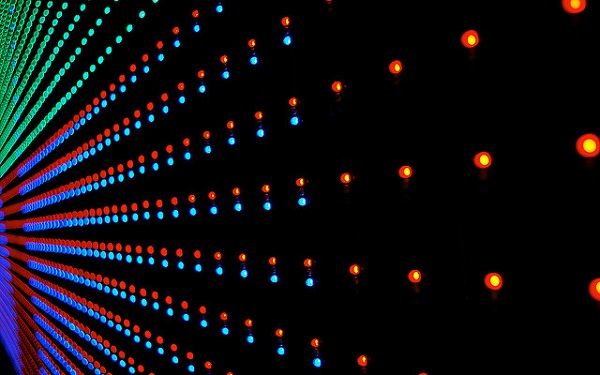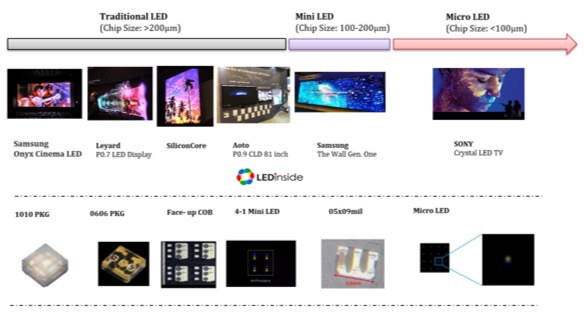Mini LED is one of the key technologies for 2019 and will be making its way into the displays of consumer electronics. On the other hand, Micro LED technology, which has been on the spotlight in the recent years, is expected to be applied on displays in the market by 2021, according to the forecast of LEDinside.

(Image: Photonic Syntropy/flickr))
Featuring high brightness and contrast, Mini LED has a chance to compete with OLED in segments of cinema display and home theater display. The development of Mini LED is expected to speed up in the next two years and Mini LED displays are projected to enter the market from 2019. LEDinside projects that the market value of Mini LED will be US$1699 million in 2022.
In the second half of 2018, many LED producers and panel makers have begun mass producing Mini LED products. Taiwanese LED manufacturers Lextar and Epistar have begun shipment of their Mini LED products. Lextar has provided its Mini LED backlight products for gaming displays and Epistar will supply its RGB Mini LED package to Chinese and Korean clients for indoor and outdoor signage. Chinese company NationStar has also reported its shipment of Mini LED products and said it could expand its capacity according to the market demands. In addition, HC SemiTek has revealed its plan to produce Mini LED backlight products including smartphones, TVs, and automotive displays.

Micro LED, the next generation display technology which attracted attention from the whole industry, has continued to advance with the efforts dedicated by worldwide experts. Max Chen, analyst of LEDinside, underlined that the integration of the supply chain is crucial for the development of Micro LED technology. The yield rate of the epitaxy wafer is critical for the chip process and will also affect cost for repairing afterwards. As cost is the most fundamental issue for the production of Micro LED, it is essential to tackle the difficulties from each process of Micro LED manufacturing.
Many companies have begun vertical integration to push the development of Micro LED technology. The Foxconn group, for example, has teamed up with LED producers Epileds and AOT, mass transfer solution provider eLux, panel maker Innolux and Sharp to integrate its Micro LED development. The Korean giant, Samsung, has also been rumored to be working with Taiwanese Micro LED startup PlayNitride and Chinese LED maker San’an for Micro LED technology.
According to the prediction of LEDinside, with the drives from the industry, the application of Micro LED on middle size displays such as TVs and gaming monitors might begin to be mass produced by 2021.













